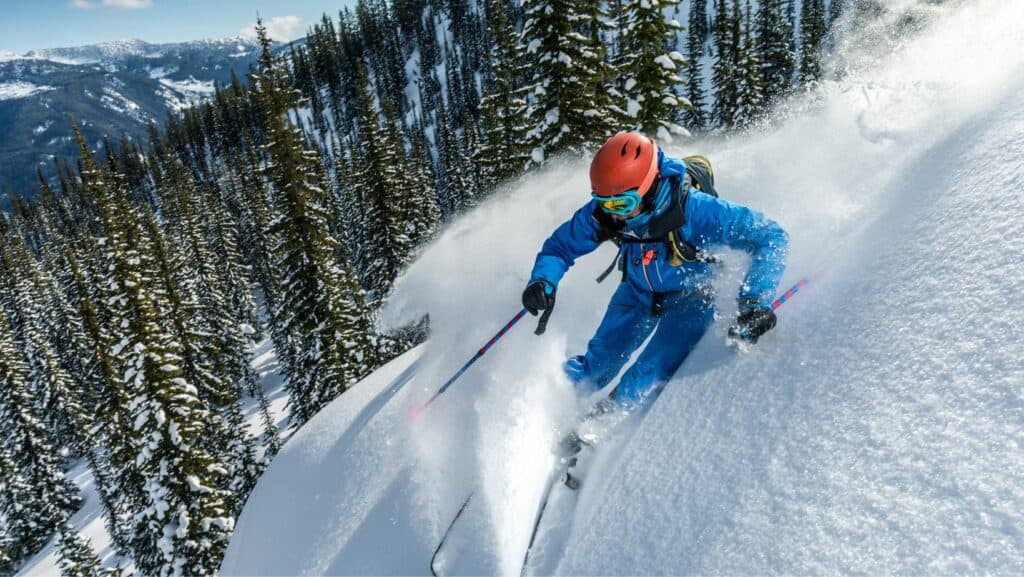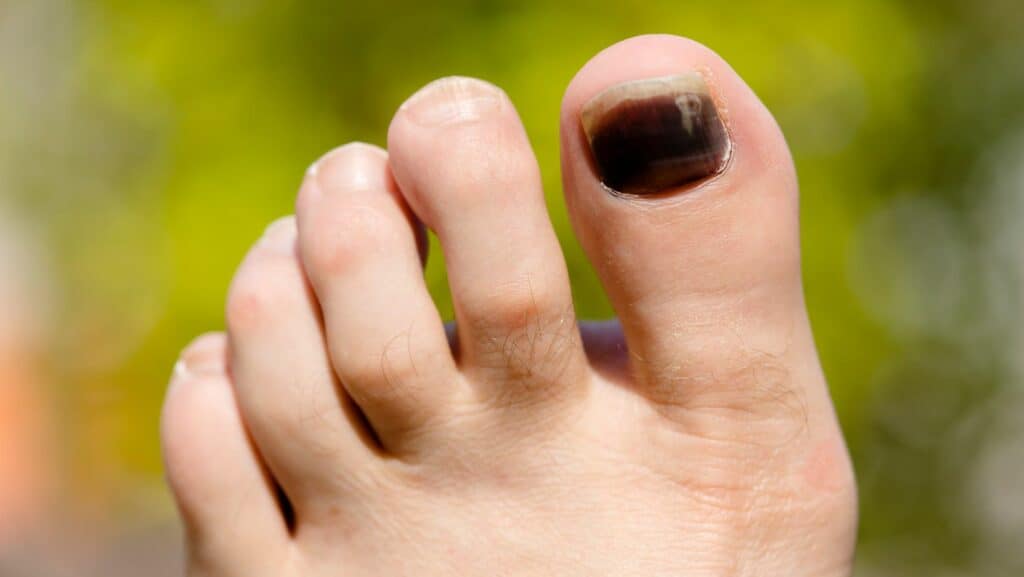Knee Pain Location Chart
Read More >
Skier’s Toe is characterised by bleeding under the nail bed due to trauma from something landing on it or, commonly in skiing, due to the constant strain of the Toe against the front of a ski boot.
The medical term for a Skier’s Toe is a Subungual Haematoma. Subungual refers to the area beneath the toe bead, while a Haematoma refers to a localised blood collection.
While Skier’s Toe is a common consequence of downhill skiing, it commonly occurs in other sports where consistent stress is placed on the big Toe, such as running, dancing and football.

The symptoms of Skier’s Toe include pain underneath the nail bed, swelling and discolouration of the nail.
Skier’s Toe pain is primarily caused by the accumulation of blood under the nail, leading to increased pressure on soft tissue and nerves in the area. The intensity of pain can be related to the volume of blood accumulation and is aggravated when direct pressure is placed on the nail.
Swelling can occur to the nail bed and the big toe due to your body’s inflammatory response to injury. In severe cases, swelling may prevent you from being able to fit your toe in your shoes or ski boots.
The Toe may be red and painful in the acute stages before changing to darker black. When the toe turns black, it is a sign of pooled blood, which may take weeks or months to be reabsorbed by your body.
Tight-fitting ski boots primarily aggravate symptoms or if you have a sudden increase in skiing activities.

Skier’s Toe is primarily caused by tight-fitting ski boots or ski boots that are too large.
Tight-fitting ski boots cause pressure on the nail bed and cause blood to pool under the nail bed, while a ski boot that is too large can lead to excessive foot movement, resulting in a repetitive impact of the nail against the ski boot.
Other causes of Skiers Toe (Subungual Haematoma) are:
Long-distance running due to the repetitive impact of the toe against the ground.
Football: Kicking the ball or impact from a tackle.
Heavy objects landing on the toe or stubbing your toe against a solid object.
Skiers Toe looks similar to Tennis Toe or Runners Toe; the Toe becomes black under the nail bed.

If you suspect you have a Skier’s Toe, you should seek medical attention as soon as possible. Treatment is usually performed by a Podiatrist who releases the pressure from under the nail by removing some blood from beneath the nail. You should not attempt to carry out this procedure at home as there is a high risk of infection.
Following the draining of the affected nail bed, non-steroidal anti-inflammatories or pain relief, such as paracetamol, may be prescribed to help with pain management.
Placing extra layers of padding, such as bandages or felt, around the big toe can help reduce the pressure on the toe. Wearing open-toe sandals such as Birkenstocks when walking reduces the pressure and pain on the toe.
A gradual return to sport or skiing is recommended over a 3-4 week period, but this should be guided by your therapist, while a boot fitting alongside an assessment for ski insoles can be helpful.
This is not medical advice. We recommend a consultation with a medical professional such as James McCormack. He offers Online Physiotherapy Appointments weekly.